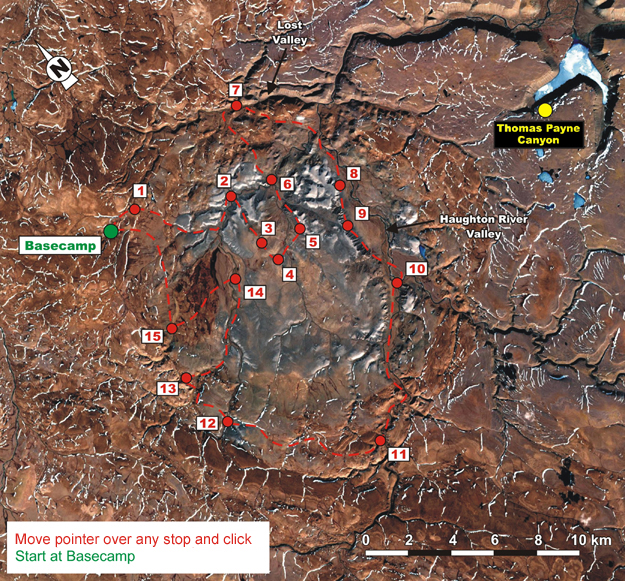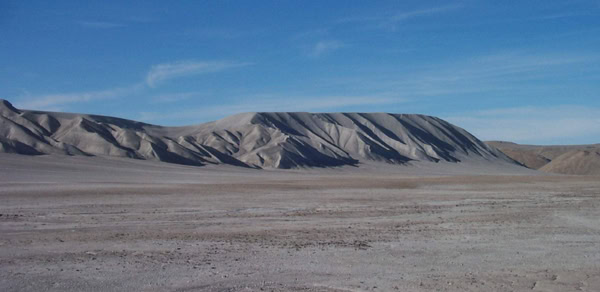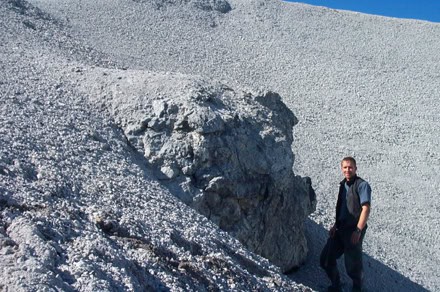
Explorer’s Guide to Impact Craters
Haughton Crater Tour
- Getting to Haughton Crater
- Virtual Tour of Haughton Crater
- Basecamp
- Thomas Payne Canyon
- Haughton – Stop 1
- Haughton – Stop 2
- Haughton – Stop 3
- Haughton – Stop 4
- Haughton – Stop 5
- Haughton – Stop 6
- Haughton – Stop 7
- Haughton – Stop 8
- Haughton – Stop 9
- Haughton – Stop 10
- Haughton – Stop 11
- Haughton – Stop 12
- Haughton – Stop 13
- Haughton – Stop 14
- Haughton – Stop 15
Stop 8 at Haughton

More hills of impact melt breccia
Photo: G. Osinski, University of Western Ontario Location: Along the Haughton River valley that eventually exits the Haughton structure to the north
We are now in the Haughton River Valley. The gray hills that you see above are made of impact melt breccias, and they run along the west side of the valley for the next 12 kilometers. Presently, the thickest remnants (up to 120 meters) of melt breccia in the entire structure are found at this location.

A large block of gneiss in the impact melt breccia
Photo: G. Osinski, University of Western Ontario
Scale: Height of the block is approximately 3-4 meters
Geologist Gordon Osinski stands next to a large block of gneiss. Before the impact event, this material was located at a depth of two kilometers or more below the surface. Within seconds after the impact occurred, the rocky material was shocked, melted, mixed with other rocks in the area, and brought up to the surface.

The gneiss block in detail
Photo: G. Osinski, University of Western Ontario
Scale: Width of lens cap is approximately 6-8 centimeters
If you look more closely at the block of gneiss, you can see the true nature of these breccias– they are composed of angular, broken rock fragments called clasts. The clasts are carbonate rocks held together by a fine-grained cement or matrix. The large clast in the center is yet another shatter cone, which you first saw at Stop 3.
